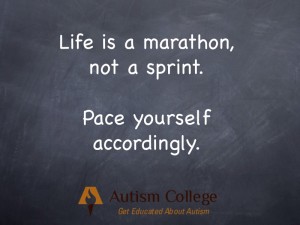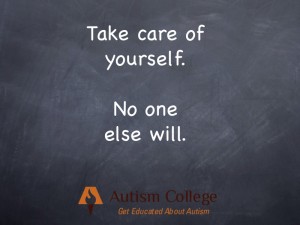 Here’s an informative article with many tips about toilet training by guest blogger, Professor Eric Lim of Kits4Kids Foundation.
Here’s an informative article with many tips about toilet training by guest blogger, Professor Eric Lim of Kits4Kids Foundation.
Toilet training is teaching an entire new skill. Teaching new skills to children with autism spectrum disorders works best when the steps to the task are organized into simple pieces. Teaching must also be consistent at all times and become predictable to the child in terms of rewards and consequences. In order for toilet training to be successful, the child must move from depending on reminders (timed trips to the bathroom) to recognizing the signs of a full bladder and taking the necessary actions him/herself.
As parents we look forward to that time when our child is finally toilet trained. We expect our child to learn to use the toilet as part of the growing up process. Not every child is alike, some children are difficult to train and may make toilet training harder on the parent. Learning to use the toilet is part of socialization. Children become interested in training when they become aware that other children and adults use the toilet. They assume that using the toilet is part of being considered a “big boy or girl.”
Most children enjoy the recognition and gratification they receive from adults when using the toilet as well as the rewards that come their way. However, young children with autism have trouble applying the same social interaction reason to toileting. They also are being asked to change set routines and rituals and they also may not be aware of or able to control their bodies just yet.
Signs of Readiness
For children on the autistic spectrum, it’s recommended to look for signs of readiness. Signs may include the following:
• Awareness that he or she has wet or soiled, a desire to remove the wet or soiled diaper (pulling at it, taking it off, digging in it, and or vocalizing displeasure.
• Getting a clean diaper, or taking you to the bathroom
• Ability to imitate actions (sitting on the toilet)
• Responds favorably to some form of positive reinforcement (a learned behavior increases after you reward it with something the child likes)
• Stays dry/clean most nights
When to start toilet training a child with autism:
• Many children with autism train later than the average age. Many succeed at urine training before bowel training. Many take longer to train, some reports suggest up to a year to become dry and two years to become clean.
• Start toilet training when you can be positive and the child is able to: sit comfortably on a potty chair or toilet for a couple of minutes, stay dry for at least 60 minutes, is aware of being wet or dirty, is showing interest in other people going to the toilet, showing some signs of cause and effect, and is willing to cooperate. Be prepared for it may be a long learning process.
Communication Problems with Toilet Training
For children with a communication deficiency visual learning may be an appropriate way to teach toileting skill. Does the child understand language? Does he or she understand “potty”, “diaper”, “dry pants”, “toilet”, “bathroom”, or any other words, signs, or pictures/symbols that may convey the idea of toileting. Children with Autism may have difficulty understanding and associating words with actions and most will at least need more time to process what you say. Can the child express the urge or need to use the toilet? Expressive language is almost always a problem for children with an autistic disorder. It will be important to be able to read their cues and/or teach a way to express the need or urge to use
the toilet.
Special consideration for children with autism:
• A child with autism may not be able to communicate a need to go to the bathroom, therefore body signals from the child, routines, and visuals might be significant aides.
• The child with autism may learn to use the toilet at home and be unable to adapt to a new situation easily.
• A child with autism may have sensory difficulties such as discomfort by the hard toilet seat, being afraid of water splashing, or want to play in or watch the swirling toilet water.
• In public bathrooms children with autism sometimes fear the hand dryers, have problems with the doors, the way the toilet flushes, or any number of challenges.
• Having a bowel movement is often harder and occurs less often. Some children go off alone and squat, some insist on wearing the pull-up or diaper to make a bowel movement, some fear that it hurts, some smear feces, and others want to be clean so much that they react to getting anything dirty on them.
• Rule out any medical problems and account for fears that may have developed due to pain from constipation or urinary tract infections in the past.
Before you begin toileting make sure your child does not have a medical problem which would interfere with making toilet training a success. This can be ruled out by the family physician after a routine physical. Contact your physician if you notice any unusual signs like too much or too little urination, painful urination, urinates frequently or unable to hold urine. The same applies to concerns with stool. Children with Autism have a higher than expected rate of bowel problems (constipation or loose stools or both) and require extra care if this is the case.
Making Toilet Training a Success
• Before starting, keep a record for a few days, charting every 20 – 30 minutes whether your child is dry, wet, or dirty. Some diapers have a strip that changes color to make this easier. Chart periodically, maybe once a day each week after starting training to keep track of progress, problems, and tendencies.
• When you start training, prepare the environment with the needed equipment and remove extra distractions.
• Plan a schedule that will match the report you gathered. If you child usually stays dry for an hour, anticipate to take him/her to the bathroom about 10 minutes before. Try to match the schedule to the natural cycles of the day.
• Plan the routine that you will have your child follow and make a picture chart of that routine so that your child and everyone who helps him can follow it. Change the cue level by decreasing examples as the child achieves the skill.
• Watch for signs of readiness such as when your charting shows being dry for an hour, your child indicates in some way that she is wetting or soiling diapers, indicates in some way that she has soiled or is wet, regular bowel movements, or interest in others going toilet.
• Keep positive, praise attempts, praise being dry and clean, use reinforcement and give your child time.
• When your child has some success with understanding toileting help him/ her learn to indicate that they are going to the toilet with a sign, word, or picture or several of these. Children today often use potty, pee and poop, but signing toilet may work or a picture of the toilet may be helpful. Visual cues as part of your routine helps the child tell you when they have to go potty.
Visual and Verbal Cues in Toilet Training
• Give a visual and verbal cue –such as an auditory giving the child a buzzer or bell. Decide what verbal cue you will use such as go potty, go pee, or go to the bathroom. If you use a signs, pair it with the verbal cues.
• Enter the bathroom with the cue needed (verbal, light touches, taking the child’s hand, or more physical assist).
• Pull pants down to ankles with cue
• Sit down with cue
• Pee or poop or both with cues
• Get toilet tissue and wipe with cue
• Stand up with cue
• Wipe, if needed, and throw tissue in toilet with cue
• Pull up pants with cue
• Flush toilet with cue
• Turn on water and wash hands with cue
• Turn off water and dry hands with cue
Use visuals: For many children, having a picture of a toilet or potty chair as a cue to go helps. You might also make a picture schedule to sequence the major activities of the day adding the toilet pictures before or after these. Children have learned to go on their own in this way. The pictures can be laminated and put on with Velcro or inserted in plastic sleeves so you or your child can take them off or change the order. There are also videotapes about using the potty that some children with autism have reacted well to. Other parents have made videos for their child to watch, some have paired music with the pictures. Model for you child, use books and pictures sequences about going to the toilet. Visuals
help your child know what to do, remember what to do, and learn from the sequence.
Use imitation: Imitation is a type of visual. Many children with autism are delayed in their imitation abilities, but many do watch carefully to what is going on around them even if they don’t seem to immediately imitate. Watching someone close to their size use the potty may be useful, but it is helpful for them to see that going to the bathroom is something everyone does. Some children might respond to the use of a doll to go through the steps.
Teach privacy and modesty: Most young children undress anywhere and don’t care who sees them go potty. However, as they are approaching four years of age, they often begin to want more privacy. Children’s needs must be considered and children have to be taught what society expects. Consider teaching your child to undo and pull down pants only in the bathroom as well as pulling up and fastening pants before leaving the bathroom. Once your child is toilet trained teach him to close the door. Also you might want to consider teaching your child when and where he must
be clothed or covered and not naked. Teach them to ask for ask for help with bathing.
Use words that are appropriate: Some children with autism are constant with the words they heard when very young and will not change to more appropriate words later. However, if you are aware of the need to be age appropriate it usually works to use the words that everyone else of the same age is using.
Ideas for Specific Problems That May Be Encountered:
• Resists sitting or doesn’t sit and relax long enough: Encourage your child to sit with his/her clothes on. Make sure the seat of the potty chair or the toilet is comfortable to your child, maybe it needs to be softer, maybe lined with a diaper, maybe warmer, or maybe your child’s feet need to be more stable. Some children may need to have the hole on the toilet smaller and experimenting with various sizes of seats or even covering the toilet with a towel or cardboard may help. Give your child a reason to sit such as his special reward that he/she gets while sitting. Use modeling by sitting together or having a doll or favorite stuffed animal sit. Give the child a visual or auditory cue about how long to sit by a visual timer or the length of a song. Help your child relax while sitting by providing support for feet and body where needed and rubbing your child’s legs. Sometimes children are so tense that they can’t relax and go.
• Afraid of flushing or excessively interested in flushing: Encourage your child to play in water that swirls in other places than the bathroom and at appropriate times. Always let your child know when you are going to flush the toilet when he/she is in the bathroom. Gradually bring your child closer to the toilet by providing a place for the child to stand while you are flushing. When your child is ready allow him/her to flush and either run or stay and watch. Establish a rule that you only flush once then you are all done.
• Afraid of public bathrooms: stalls, hand dryers, different sinks, toilets that flush automatically: At first, it may be necessary to be aware of the public bathrooms you may frequent to know what is likely to cause your child problems. Some of these can be avoided like being far away from the dryer and not walking under it and practicing with soap dispensers and sinks that go on by themselves in a fun way. Protect your child from toilets that automatically flush since some splash a lot. The more you know about the quirks of the public restroom the more you can prepare you child. The handicap stalls are wider and more accessible many a sink next to the toilet.
• Playing in water or with toilet paper: Take the toilet paper off the roll and put it up until your child can master the use of it. Put safety catches on toilets until your child can understand that toilets are not places to play. Allow lots of water play in appropriate places and even swirling water to watch such as in “tornado bottles”. Lower water toilets aren’t as much of a temptation while sitting. Use tissues that are folded or pre-measured, a box of wipes, and folded toilet paper are helpful.
• Resists being cleaned or not wanting to be dirty: Sometimes smearing of feces begins by the child trying to clean himself. They may try to clean up then make a mess. For whatever reasons your child may be having trouble in this area it is wise to stay as calm as you can. Establish a clean up routine that is not especially rewarding, but is comfortable and quick. Make sure the wipes are big enough and comfortable enough for your child including temperature and texture. If your child gets some feces on his hand and is distraught help the child wipe it as soon as possible. Show the child that they can wash their hands clean with soap and water. Sometimes as children with autism grow older they become upset when something happens like a toilet overflowing or they get their hands dirty and react
out of proportion, so we want to assure them early on that this can be fixed quite easily.
• Fear of having bowel movements or constipation: This is a common problem for many children with autism at some time in their childhood. It may be contributed to by diet, not sitting long enough, not being able to relax, their activity level, or various other factors. It is helpful to help a child recognize that the grunting and squatting he/she is doing helps make a bowel movement and that is good. Many children go and hide in a corner to do their poop and resist a change. Help them move closer to the bathroom and perhaps identify where to squat by using a plastic mat as the spot. Gradually influence the action to the potty or toilet over time the child associates the grunts and pushes as signals.
A child may have to go in the diaper even while sitting for a while so try a diaper-lined toilet seat. If a child experiences constipation on a regular basis bowel movements may be uncomfortable and you may need to seek advice from you doctor.
• Trouble in standing while urinating: When your son is sitting to urinate and completely toilet trained or when he shows an interest in standing he may need help. A visual chart of how boys use the bathroom may be helpful. For example action pictures of a boy putting the seat up, standing while urinating and aiming in into the toilet. Sometimes boys do not want to touch their penis because they may have been told not to touch on some occasion. A male in the family may need to demonstrate how to point and aim. Something may be used for a target like a floating paper, a Cheerio, or colored toilet water.
• Regression in toileting: Sometimes a child who is fully toilet trained will begin to have many accidents. Evaluate changes that have occurred and what information or additional supports may help your child feel comfortable again. Some reasons regression may occur are after an illness, after a parent has been away, after a move, after starting school, after a baby has been born, or when going to the bathroom has been painful. Your child may be in a situation where he doesn’t have the skills to tell someone he needs to go and holds it too long. His supports may not be in place. Sometimes at school there is something about the environment or the schedule that is causing problems for your child.
Go back to all the original supports that worked and put them back into your child’s life while reassuring your child that he/she can and will succeed.
Consistency in Toilet Training
Your child can be toilet trained. However, training your child with autism will likely take more planning, attention to detail, and consistency than training typical children. (Remember that all children with autism are different and some are easy to train.) You have to organize the sequence and provide a schedule and consistency until your child understands how all this relates to his body functions. Keep your expectations realistic and reinforce your child for trying as well as for success, always reassuring the child that he/she will succeed and there is plenty of time to try, and be persistent.
 Margaret Heffernan, blogger for for INC. interviewed me about autism and employment and wrote this blog post. You can read the original post and comments here.
Margaret Heffernan, blogger for for INC. interviewed me about autism and employment and wrote this blog post. You can read the original post and comments here.







